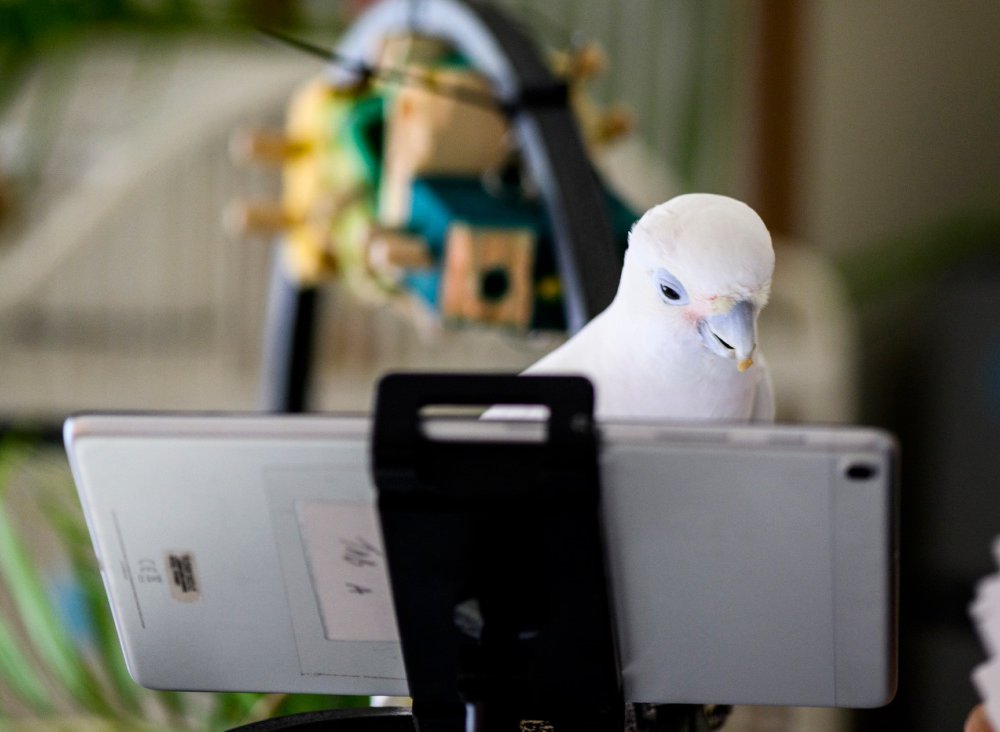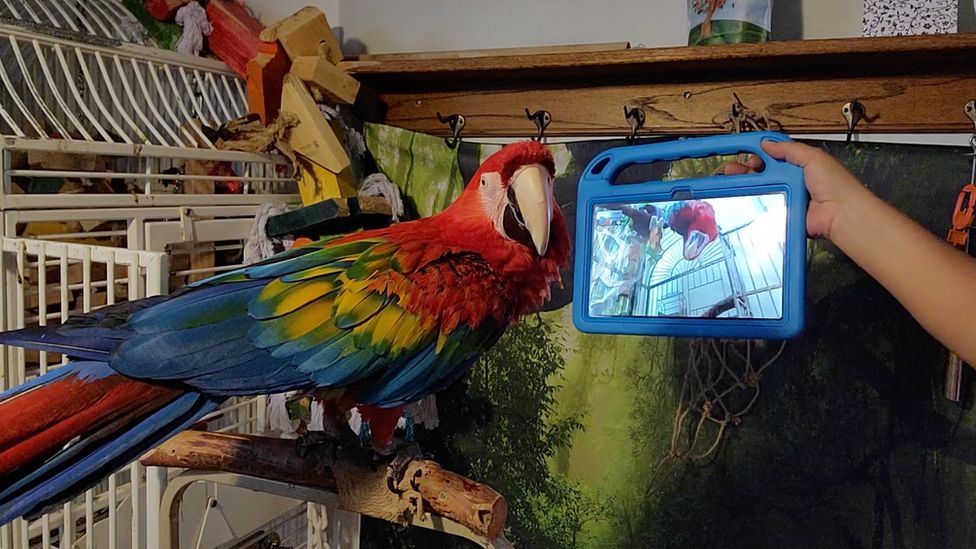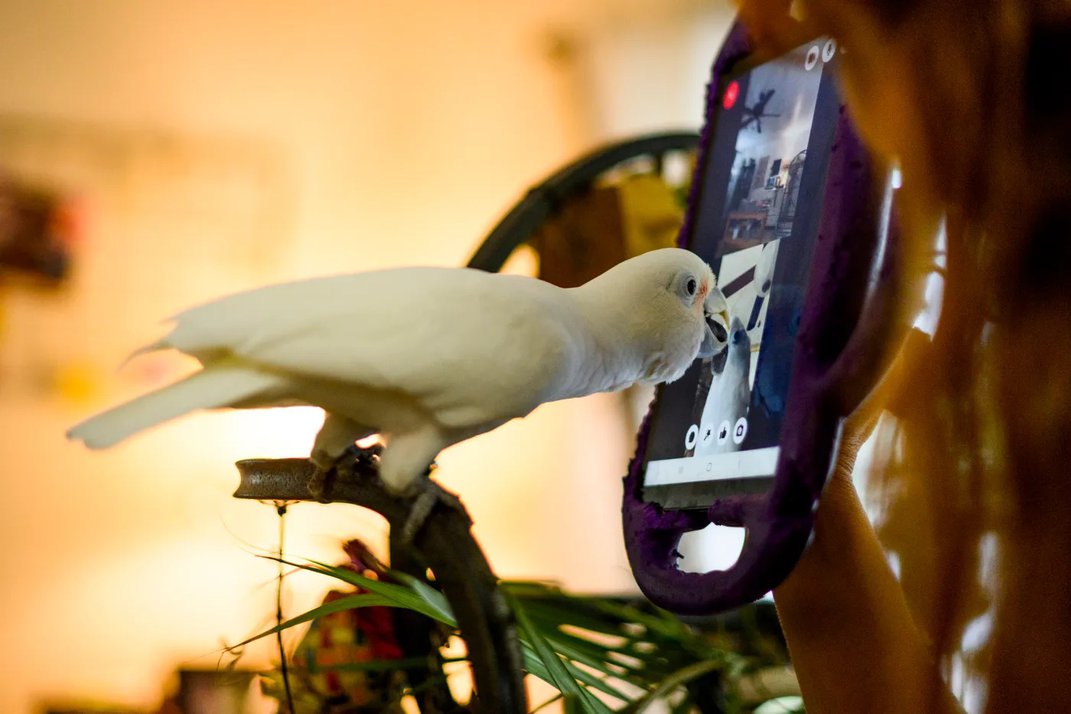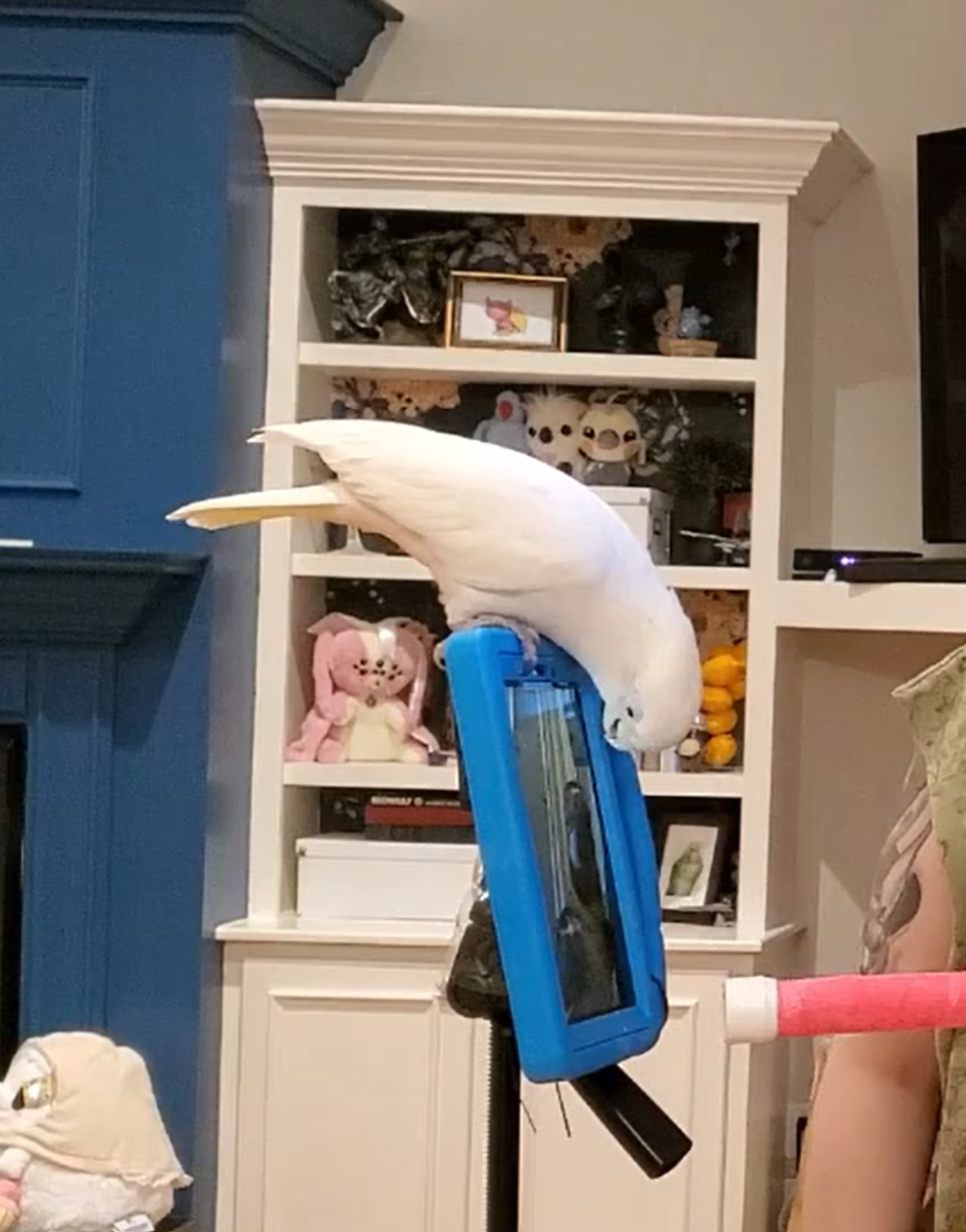When people feel bored, we can meet friends online via phone or computer screen. In the new study, scientists asked parrots the same question, and they discovered that the cunning birds enjoyed video calling their loved ones.
Researchers confirm that through the act of video chatting with each other, domesticated parrots can have positive experiences, such as learning new skills. “ She was much more lively during the call ,” a parrot owner confirmed to scientists from Northeastern University.

The idea that guided this scientific research did not come by chance. In the wild, parrots often live in flocks, but when domesticated and kept at home as pets, these creatures often have to stay alone. Living alone and away from the flock, parrots may suffer from a number of psychological symptoms or even exhibit self-harming behaviors such as using their beak to pluck feathers.
Lonely parrots are unhappy parrots, which is why researchers sought to connect approximately 20 million parrots across the United States. They recruited volunteers to participate in the study from Parrot Kindergarten, an online parrot training program for parrot owners and their pets.
Lonely parrot finds joy from video calling.
During the first two weeks of research, parrot owners will teach their pets to ring a bell, then use their beak to select another parrot on the touch screen to make a call. During this period, the parrots participating in the study made a total of 212 video calls under the close supervision of their owners. Each call only lasts a maximum of 5 minutes, and the parrot owner can directly end the call early if they see that the pet is no longer interested in the tablet screen. Of all 18 participating parrots, only 15 individuals were patient enough to go to the next round.

Once the parrots participating in the experiment got used to the video calling, phase two of the study began. This is when the 15 parrots can freely call, and also have the right to choose who they talk to. Over the next two months, the 15 parrots made a total of 147 calls to other birds, giving scientists more than 1,000 hours of data to analyze.
First, they discovered that parrots took full advantage of the opportunity to call, and often talked to each other for the entire 5 minutes they were given. According to researchers, parrots seem to understand that they are directly communicating with another parrot, not watching a video. Some parrots learn new skills from their “video calling friends”, or learn how to make new sounds.

“ I was surprised by the number of different behaviors they had ,” study co-author Ilyena Hirskyj-Douglas – an expert in animal-computer interaction research at the University of Glasgow – told The Guardian in an interview. “ Some parrots sing, some play around, some even want to show their toys to other parrots .”

The parrots became close friends through the screen, and scientists assessed the closeness through the frequency of phone calls between two individual parrots. The parrots that call the most are also the ones that are called the most, which is somewhat similar to how humans communicate in society.
The experiment also brought humans and parrots closer together. According to reviews, some parrots show interest when they see their parrot owner making video calls.
While video calls cannot replace social interaction, they can still be a timely option to help people, or parrots, get closer together. However, scientists warn that the study is not a basis for every pet owner to immediately let their pet call their friends: parrot owners who participated in the study were all well-trained and had plenty of time. While taking care of their pets, they always monitor whether the parrot shows signs of fear, anger or discomfort to immediately stop the conversation.
The scientific report points out many valuable lessons, such as how technology is becoming a bridge not only between people and humans, but can also connect animals with animals, and even animals with humans. Technology has been creeping into every aspect of life, and this is a ripe time for researchers to study the positive impacts of technology on life, of humans in particular and of living creatures. Generally speaking.
Refer to Smithsonian Mag





